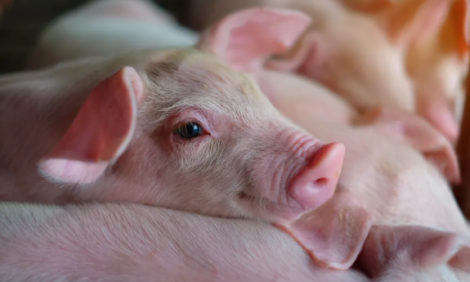



Cost of Pig Production
What confidence there was in the EU pig sector earlier in 2010 was considerably eroded as world grain prices increased throughout the summer months. Combined with wider economic and financial challenges in the EU, the challenge of profitability remained a large issue as consumption remained subdued, according to the 'Pig Cost of Production in Selected Countries' report produced by the AHDB for BPEX.The rise in cereal prices hit pig feed prices in the second half of 2010.
This led to increases in costs of production in every country in InterPIG. Prices continued moving higher during the year, so that by the end of 2010, production costs were considerably higher than the 2010 average costs presented in this report. Feed prices remained high in 2011, impacting costs of production.
Throughout most of 2010, EU pig prices were generally less firm than in 2009, while slaughterings were higher. For weaners, prices also declined sharply as finishers looked to pay less for them in order to offset increased feed costs. Although weaner prices across the main producing EU Member States fluctuated at differing times throughout the year, the common trend since the summer was one of marked decline.
British pig meat production made some further performance gains in 2010 but overall, performance is still lagging behind the European average in many key areas.
The cost of pig meat production in Great Britain increased by nine per cent in 2010, to 145.8p per kg. This compares with the average cost of production in the EU at 136.7p per kg deadweight, which was up two per cent.
Production costs in Great Britain were above the European average, in part due to significant increases in feed prices. As a result, Great Britain became less competitive in terms of costs of production than in previous years.
Despite the higher relative cost of production in Great Britain, there were some improvements in physical performance, e.g. litters per sow per year.
Producer prices decreased notably during 2010, which resulted in reduced net margins compared with 2009, with many countries having negative margins.
Feed prices increased following lower quotations during 2009. This impacted on most member countries costs of production.
In Great Britain, the cash cost of production, i.e. excluding finance costs, was 125.5 per kg in 2010. This was about 10p higher than in 2009. The UK cash costs of production were 9p more than the EU average.
In 2010 as a whole, EU feed costs increased by four per cent compared with a year earlier, in Sterling terms. The cost increase (in Sterling) was 13 per cent in Great Britain to 85p per kg deadweight.
The overall average number of pigs weaned per sow per year in the European InterPIG countries showed a two per cent increase in 2010, up from 23.97 in 2009 to 24.35. There was a one per cent decrease in pigs weaned per sow in Great Britain.
Great Britain maintained a post-weaning mortality of 5.6 per cent, the same as the average for the European countries in 2010.
The average number of pigs finished per sow in Great Britain decreased slightly in 2010. At 21.4 pigs per sow, average performance was 0.3 pigs lower than in 2009 but was still 0.6 pigs higher than in 2005.
Following two years of strong improvements in Daily Liveweight Gain (DLG), Great Britain slipped back in 2010 to 766g per day, a fall of six per cent. This is the first fall seen since 2003 but the 2010 figure is still over 20 per cent higher than it was then. Despite the fall, Great Britain’s average DLG still matches the EU average.
Great Britain produced 1.63 tonnes of carcase meat per sow in 2010, one per cent lower than in 2009 because of lower numbers of pigs finished per sow, while average carcass weight was little changed.
The average cost of production in the EU in 2010 was 136.7p per kg deadweight, two per cent higher than the previous year. Costs of production in Great Britain were substantially higher at 145.8p, a rise of nine per cent compared with the previous year, when UK costs were marginally below the EU average.
The Czech Republic had the highest cost of production, due to the poor productivity of its breeding herd. Its average costs stood at 183.4p, following a rise of 12 per cent. Italy had the second highest costs at 153.5p, due to Italian pigs being finished at heavier weights than in other EU countries.
The third highest production cost, in Sweden, also experienced a rise of 12 per cent year on year, taking its cost to 147.9p.
The lowest production costs in the EU were in France (119.9p) and Denmark (120.6p).
Despite the increased costs of production, the average UK reference price was lower during 2010 than in 2009, averaging 138p per kg, although this was 14 per cent above the EU average of 120p per kg.
The decrease in prices meant that average costs of production throughout the year were above the average price received during the 12 months. These figures imply a loss of eight pence on every kilo of pig meat produced in the UK in 2010 (compared with an 11p surplus in 2009).
Across the EU countries, which were sampled, there was a technical loss of 17 pence on every kilo of pig meat produced, with only France having production costs below the EU average reference price.

January 2013








